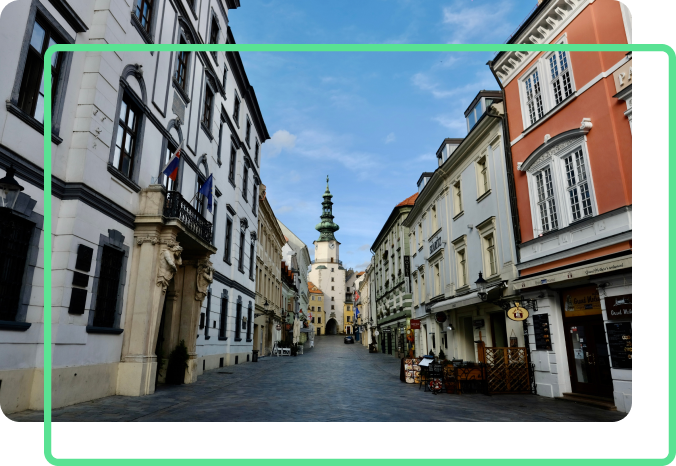Climate change
If we do not reduce greenhouse gas emissions in Bratislava, Slovakia or globally, the average temperature could rise by 1.5 degrees in less than a decade, in comparison with the temperature pertaining prior to the Industrial Revolution. The problem, however, is not the temperature rise itself, but determining what sort of problems it will cause and what irreversible changes it will trigger.
Torrential rains and massive floods, or prolonged heatwaves and droughts causing rivers to dry up, are already leading to economic losses and loss of life. Hundreds of thousands of people will be at risk of losing their homes and of subsequent migration, which may trigger territorial conflicts.

If we do not reduce greenhouse gas emissions in Bratislava, Slovakia or globally, the average temperature could rise by 1.5 degrees in less than a decade, in comparison with the temperature pertaining prior to the Industrial Revolution. The problem, however, is not the temperature rise itself, but determining what sort of problems it will cause and what irreversible changes it will trigger.
Torrential rains and massive floods, or prolonged heatwaves and droughts causing rivers to dry up, are already leading to economic losses and loss of life. Hundreds of thousands of people will be at risk of losing their homes and of subsequent migration, which may trigger territorial conflicts.

What does climate change mean for Bratislava?
Dramatic
and accelerating weather changes
High temperatures, prolonged droughts or floods in the city
Impact on vulnerable groups such as children and the elderly
The overall impact on our quality of life
That’s why we want to encourage a discussion on climate change, sustainable development of the city and finding solutions to this serious situation.
We can focus on
two key strategies:
There are many options, the important thing is to make a decision and take action.
by addressing its causes
adapting to climate change
to minimize its impacts
Mitigation
Goals
- Reducing greenhouse gases
Examples
- Use of energy-efficient technologies
- Developing sustainable transport, using local resources, and reducing transport demands
- Making industrial production processes more efficient
- Developing renewable energy sources
- Developing community and household gardens, i.e. reducing the need to transport food
Overlapping measures
- Developing green infrastructure
- Conserving water and energy
- Raising environmental awareness and education
Adaptation
Goals
-
Increasing adaptation capacity
-
Enhancing the capacity to live with changing climatic conditions
-
Building resilience to extreme weather and climate change
-
Risk and disaster management, resilience to fires and floods
Examples
- Protection of forests
- Design of infrastructure and buildings
- Flood protection
- Changing farming practices (planting heat-tolerant plants or planting a mix of plants as protection against pests)